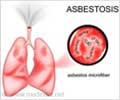Respiratory syncytial virus (RSV) disease caused over 45,000 deaths in infants under six months old in 2019, with one in five of the total global cases of RSV.

‘According to the report, the incidence rate in India is 53 (5.3%) per 1,000 children per year and there are approximately 61,86,500 episodes of RSV-related acute lower respiratory infection in children under five years of age.’





"RSV is the predominant cause of acute lower respiratory infection in young children and our updated estimates reveal that children six months and younger are particularly vulnerable,” said research co-author Harish Nair from the University of Edinburgh, UK.This was "especially with cases surging as COVID-19 restrictions are easing around the world and majority of the young children born in the last 2 years have never been exposed to RSV (and therefore have no immunity against this virus)," Nair said.
Vaccines for Respiratory Syncytial Virus (RSV)
The researchers noted that since a large number of RSV vaccine candidates are in the making, estimates of shorter age limits may help identify groups that should be given priority.This includes pregnant women, as well as current strategies for vaccinating pregnant women against whooping cough, typhoid and tetanus.
The findings are in line with previous estimates from the 2015 study, which put the annual number of RSV cases in children under the age of five at 33.1 million, resulting in a total of 118,200 deaths, the researchers said.
However, they said that these updated estimates of global, regional and national RSV mortality for 2019 include sample data from more than a hundred new studies.
Advertisement
Worldwide, there were 33 million RSV-related acute respiratory infections in children under the age of five worldwide in 2019, leading to 3.6 million hospitalizations, 26,300 hospital deaths and 101,400 RSV-caused deaths, the researchers said.
Advertisement
For babies less than six months old, there were 6.6 million RSV-related cases of severe low respiratory infections worldwide in 2019, according to researchers.
Of the 1.4 million hospitalized in this age group, 13,300 hospital deaths and 45,700 total deaths are attributed to RSV, which is 2.1% of the annual deaths for any one of the 50 causes.
Based on estimates of in-hospital and overall RSV mortality rates, only 26% or one-fourth of all RSV-related deaths occur in hospital worldwide.
This is particularly evident in low- and middle-income countries, where the case-to-hospital mortality rate for children under the age of five is 1.4%, compared to 0.1% in high-income countries.
According to the report, the incidence rate in India is 53 (5.3%) per 1,000 children per year and there are approximately 61,86,500 episodes of RSV-related acute lower respiratory infection in children under five years of age.
Overall, 97% of RSV deaths in children under the age of five have occurred in low- and middle-income countries.
"Our study estimates that three-quarters of RSVs deaths are happening outside of a hospital setting. This gap is even greater in LMICs, especially in children under six months old, where more than 80 per cent of deaths are occurring in the community," said Xin Wang, co-author of the study, Nanjing Medical University, China and University of Edinburgh, UK.
"This reflects the fact that access and availability to hospital care are still limited in these regions. Early identification of cases in the community and referral for hospital admission of sick children (particularly those with low oxygen saturation in peripheral blood), and universal effective and affordable immunisation programmes will be vital going forward,” Wang said.
This study also has some limitations such as variations in factors such as study setting, exact case definition for acute lower respiratory infection, health-care access and seeking behaviour, and eligibility for RSV testing could affect estimates of mortality figures produced in the modeling.
Source-Medindia









